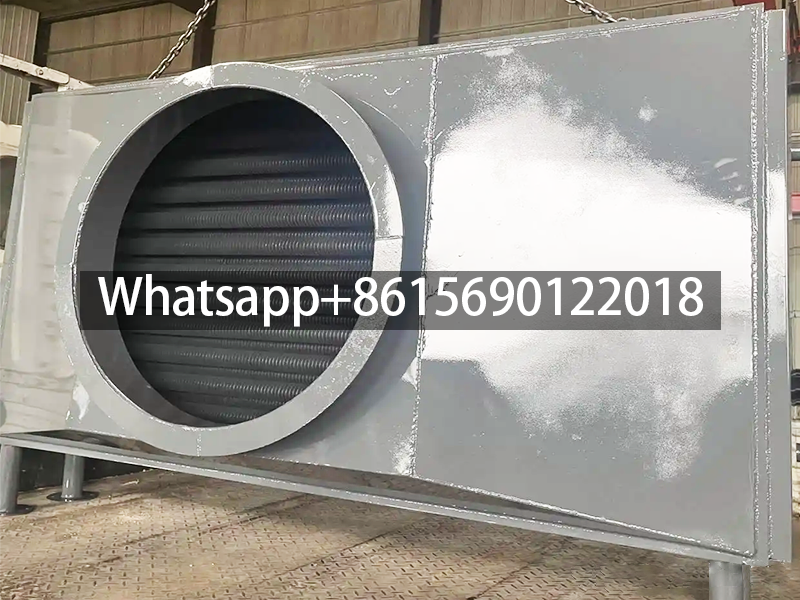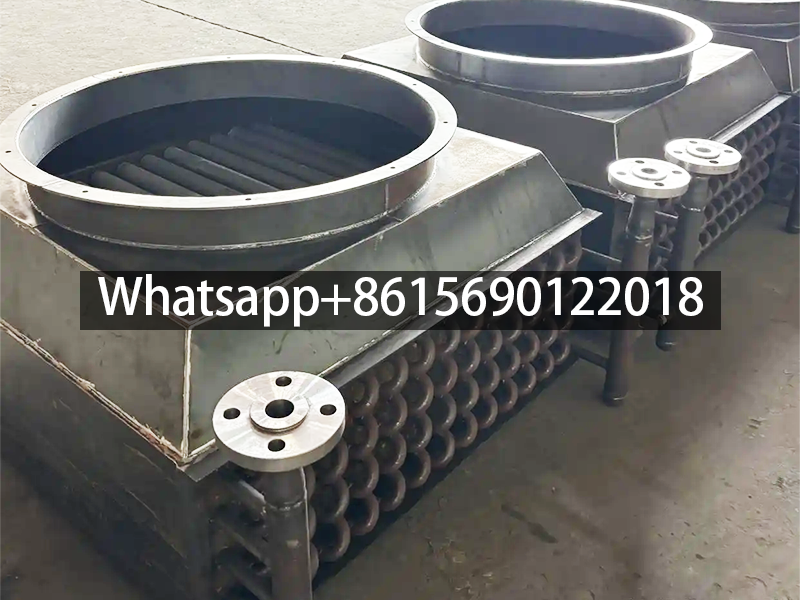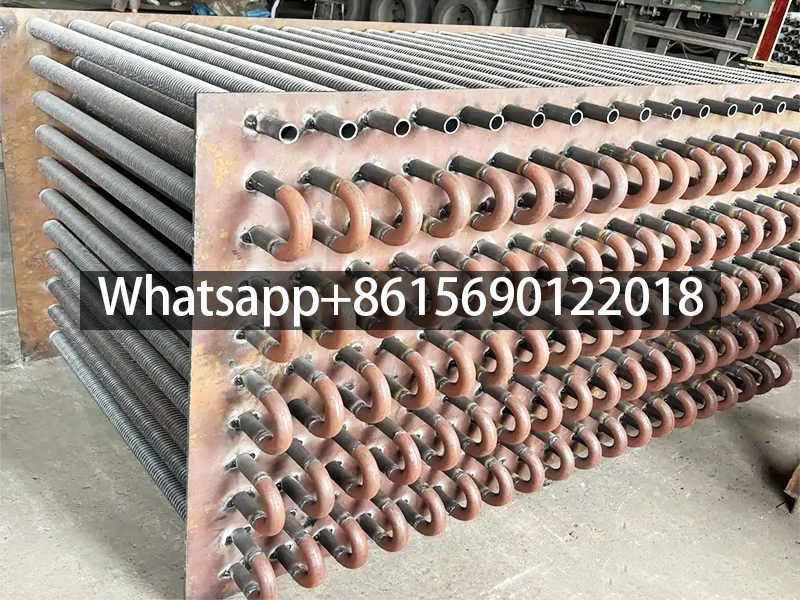- Product Name: Waste Heat Recovery Fin Tube Heat Exchanger
- Function:Waste Heat Recovery
- Leave Your Message
Waste Heat Recovery Finned Tube Heat Exchanger: Technology and Applications
1. Introduction
Finned tube heat exchangers for waste heat recovery are specialized equipment designed to capture and reuse thermal energy from industrial waste streams (exhaust gases, liquids, or steam) by transferring heat to lower-temperature media (water/air) through enhanced surface area finned tubes. This technology significantly improves energy efficiency while reducing carbon emissions in industrial processes.
2. Working Principle
The operational mechanism involves three key stages:
- Heat Collection: High-temperature waste flows through one side (tube/shell side), releasing thermal energy.
- Heat Transfer: Energy conducts through tube walls to fins, which amplify heat dissipation via expanded surface area.
- Heat Utilization: Coolant absorbs energy and becomes reusable (e.g., hot water/air) for processes like preheating or power generation.
3. Structure and Technical Features
Core Components
ComponentTypes/MaterialsFunctionFinned TubeSpiral/welded/embedded fins; Carbon steel/Stainless steel/Cu/AlPrimary heat transfer surface with 3-5× efficiency vs. bare tubesShell & PipesPressure/temperature-resistant materialsFluid containment and flow channelsAuxiliariesSensors, cleaning devicesOperational monitoring and maintenance
Technical Advantages
- High Efficiency: 3-5 times greater heat transfer than smooth tubes
- Compactness: High surface-area-to-volume ratio
- Adaptability: Handles high temps (≤650°C), pressures (≤4MPa), and corrosive/dusty conditions
4. Applications
IndustryHeat SourceReuse ApplicationSteelBlast furnace gas (300-600°C)Combustion air preheatingChemicalReactor exhaust (200-400°C)Process fluid heatingPower PlantBoiler flue gas (150-300°C)Feedwater preheatingCementKiln exhaust (250-450°C)Raw material drying
5. Conclusion
Finned tube heat exchangers are pivotal for industrial energy conservation, offering customizable solutions across sectors to harness waste heat economically and sustainably.
Waste heat recovery fin tube heat exchanger
1. What is a waste heat recovery fin tube heat exchanger?
Waste heat recovery fin tube heat exchanger is a device that uses fin tube heat exchanger technology to recover waste heat (waste heat) in industrial production. It is mainly used to transfer the heat in high-temperature waste gas, waste liquid or waste steam generated in the industrial process to low-temperature media (such as water, air, etc.) to achieve heat reuse, thereby reducing energy consumption and improving system efficiency.
Its core component is the fin tube, that is, metal fins (such as steel, copper, aluminum, etc.) are installed on the surface of ordinary heat exchange tubes to increase the heat transfer area and improve the heat exchange efficiency.
2. Working principle of waste heat recovery fin tube heat exchanger
Waste heat collection: high-temperature waste gas, waste liquid or waste steam flows through one side of the fin tube (tube side or shell side) to release heat.
Heat conduction: heat is transferred to the fins through the wall of the fin tube, and the fins accelerate heat dissipation by increasing the surface area.
Heat transfer: Low-temperature media (such as cold water, air) flows through the other side of the fin tube, absorbs heat and heats up to become a usable heat source (such as hot water, hot air).
Recycling: The recovered heat can be used to preheat process media, heating, power generation, etc., to realize waste heat resource utilization.
3. Main structure and characteristics of waste heat recovery fin tube heat exchanger
Core structure
Fin tube:
Type: According to the fin form, it can be divided into wound fin type, sleeve type, welded fin type, spiral fin type, inlaid fin type, etc.
Material: Common materials include carbon steel, stainless steel, copper, aluminum, etc., which need to be selected according to working conditions (such as temperature, corrosiveness).
Shell and pipeline: constitute the fluid channel, which must meet the requirements of pressure resistance, temperature resistance and corrosion resistance.
Accessories: including inlet and outlet pipes, brackets, temperature/pressure sensors, dust cleaning devices (for dust-containing exhaust gas scenes), etc.
Technical features of waste heat recovery finned tube heat exchanger
High-efficiency heat transfer: fins significantly increase the heat transfer area, and the thermal efficiency is 3-5 times higher than that of ordinary light tubes.
Compact design: large heat transfer area per unit volume, saving installation space.
Strong adaptability: can handle complex working conditions with high temperature, high pressure, corrosive or dusty.
Energy saving and consumption reduction: reduce the demand for primary energy of enterprises and reduce carbon emissions.
IV. Application scenarios of waste heat recovery finned tube heat exchanger
Waste heat recovery finned tube heat exchanger is widely used in waste heat recovery scenarios in high-energy-consuming industries, such as:
Steel industry: recover heat from blast furnace gas and steel rolling wastewater for preheating combustion air or producing hot water.
Chemical industry: recover reactor waste gas, distillation tower waste heat, heating process medium or heating.
Power industry: recover heat from boiler exhaust and turbine exhaust steam to improve unit thermal efficiency.
Building materials industry: recover heat from kiln exhaust gas for drying raw materials or workshop heating.
Food and papermaking: Recover steam condensate, heat from drying waste gas, and preheat process water or air.




